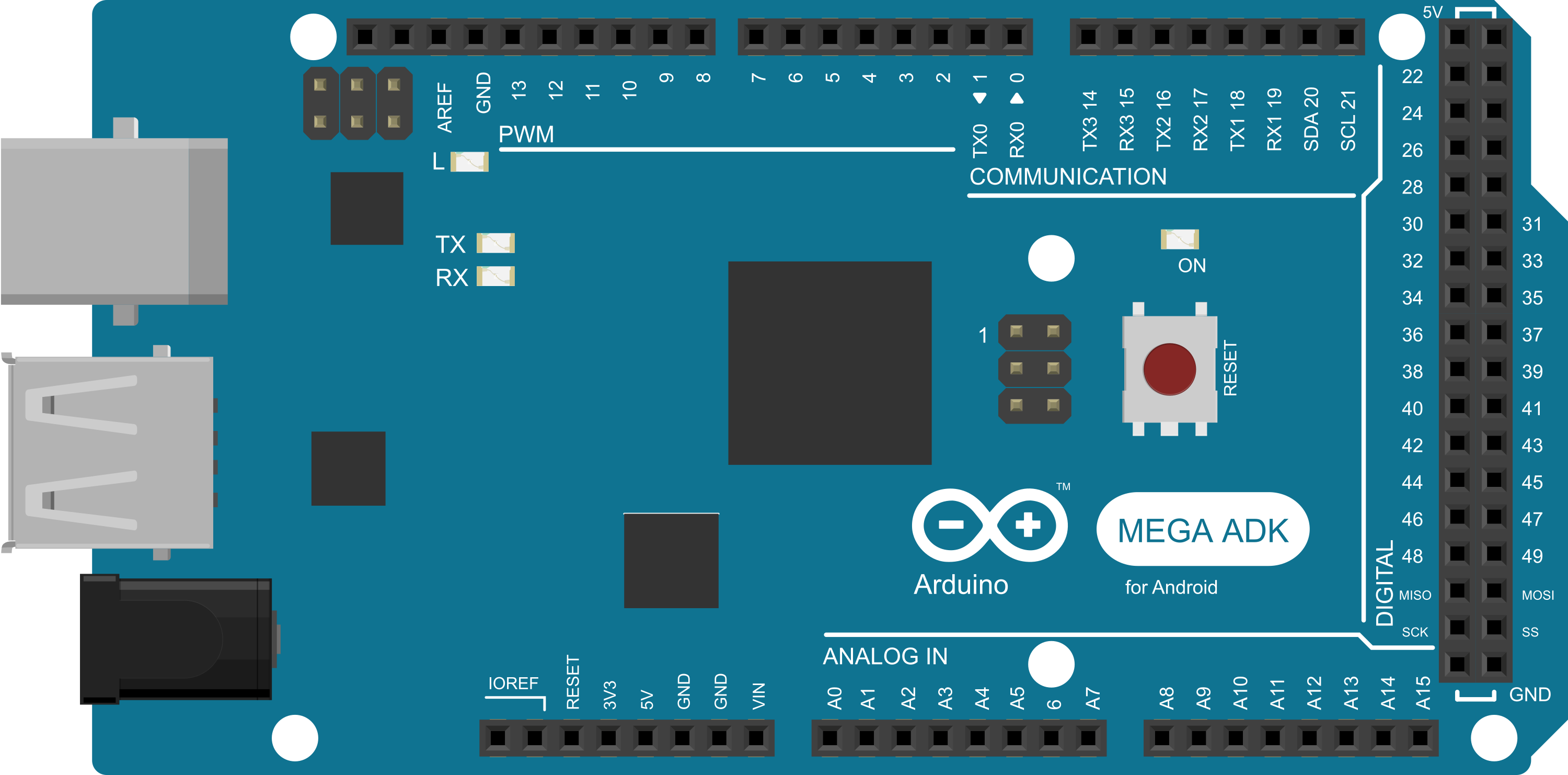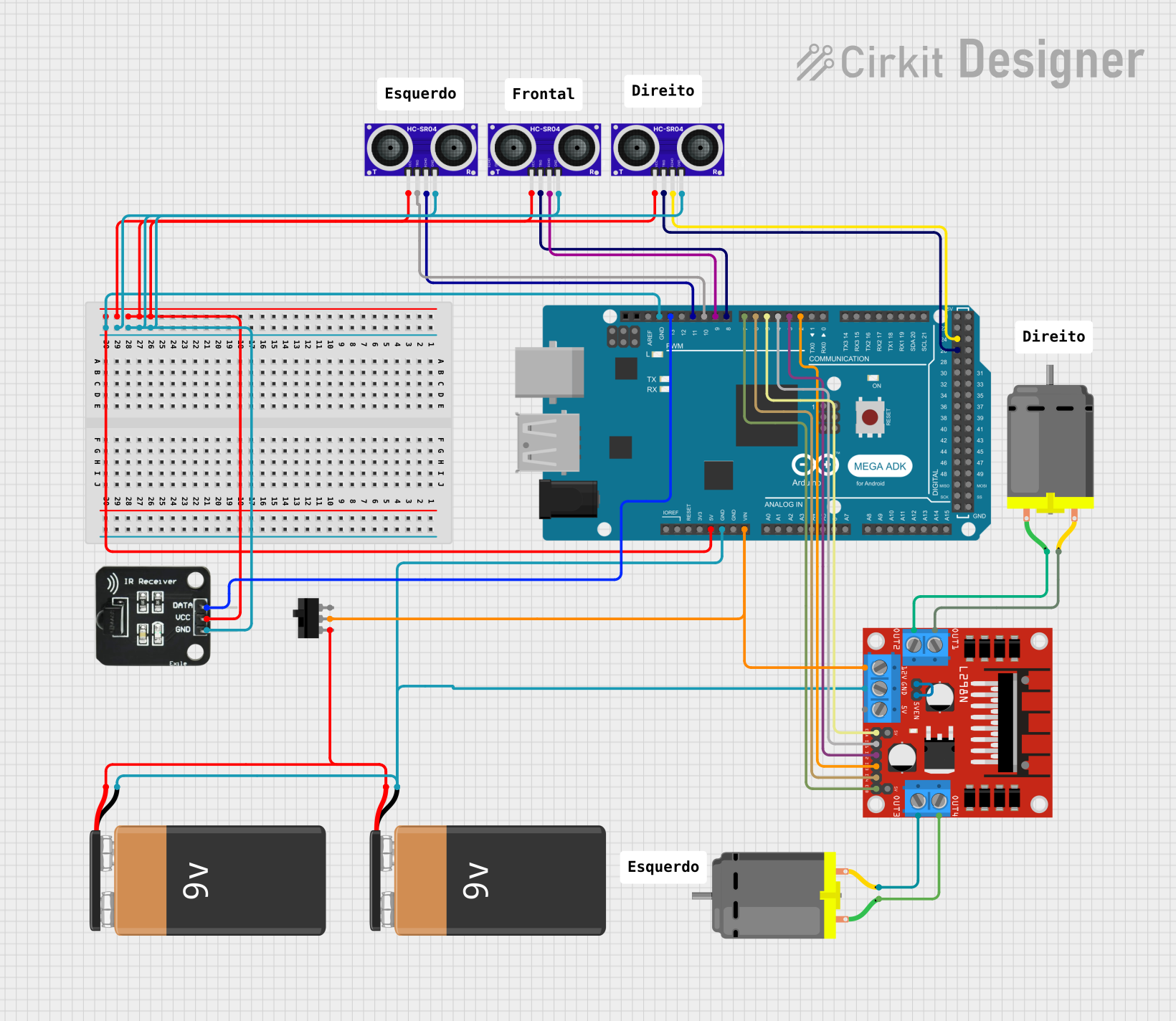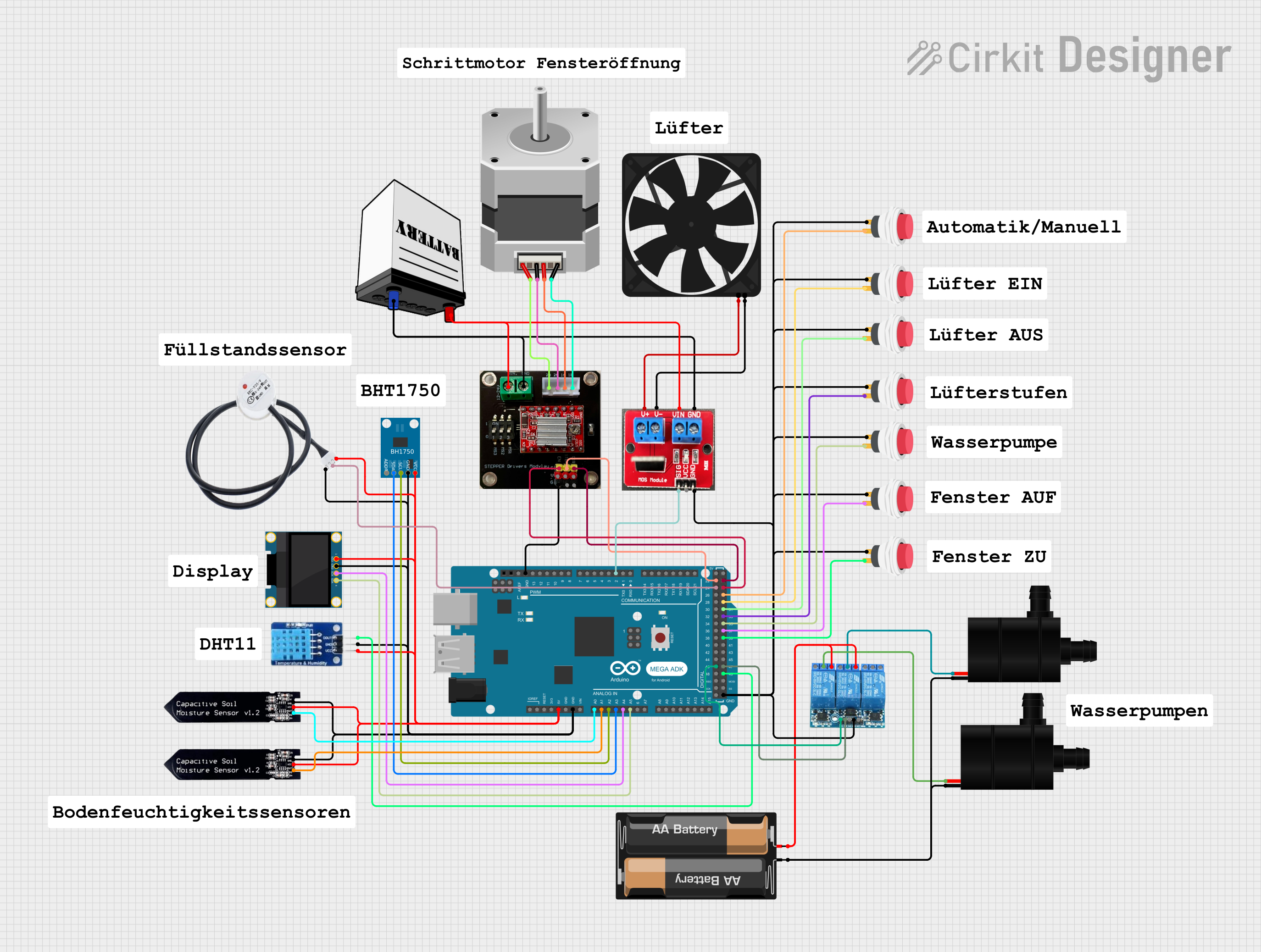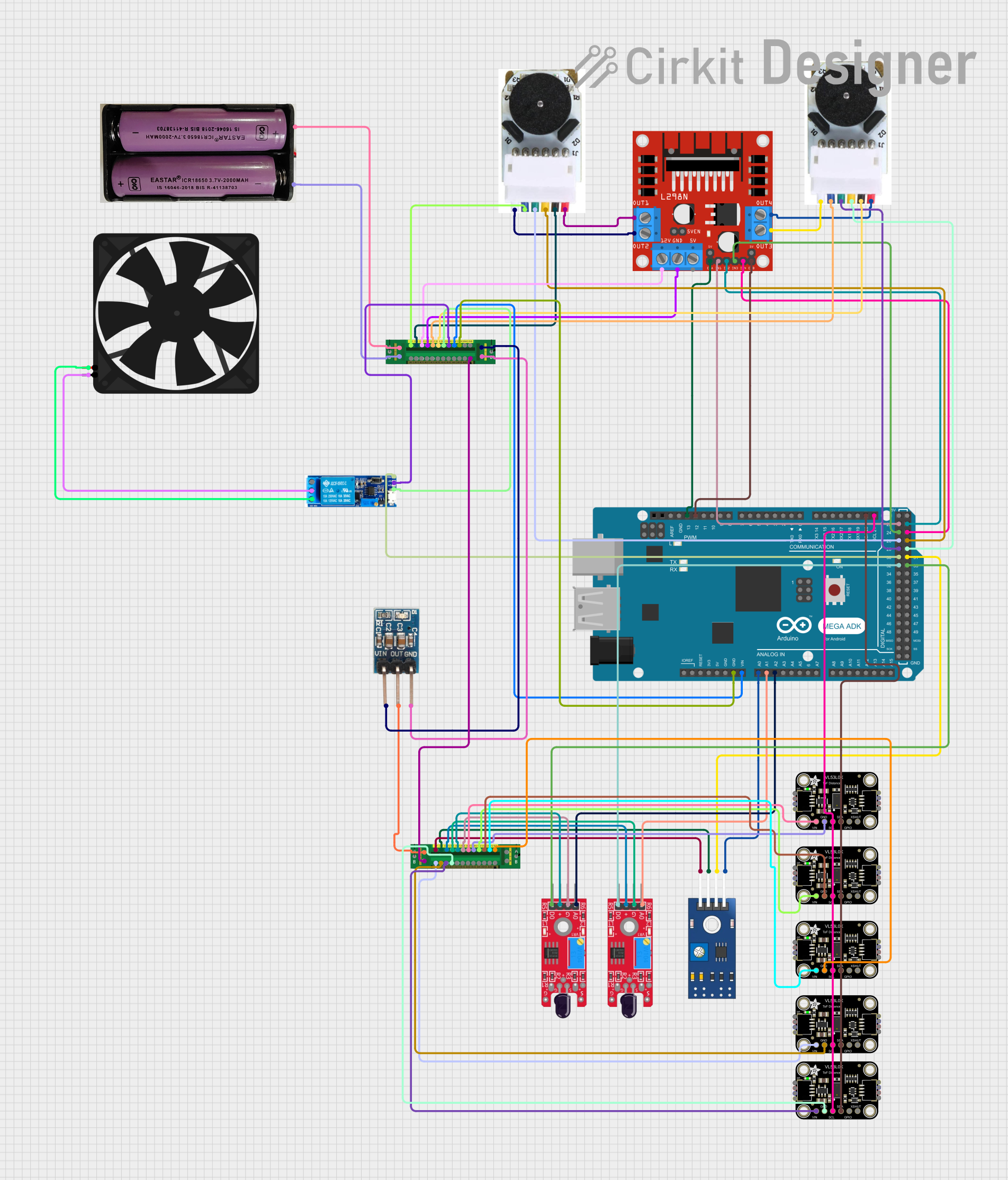
How to Use Arduino Mega ADK (Rev3): Examples, Pinouts, and Specs

 Design with Arduino Mega ADK (Rev3) in Cirkit Designer
Design with Arduino Mega ADK (Rev3) in Cirkit DesignerIntroduction
The Arduino Mega ADK (Rev3) is a microcontroller board based on the ATmega2560, designed to work with Android devices through its USB host interface. It is an ideal platform for developers looking to create interactive physical computing environments or to integrate Android devices into their projects. The board is compatible with most shields designed for the Arduino Mega2560 R3.
Explore Projects Built with Arduino Mega ADK (Rev3)

 Open Project in Cirkit Designer
Open Project in Cirkit Designer
 Open Project in Cirkit Designer
Open Project in Cirkit Designer
 Open Project in Cirkit Designer
Open Project in Cirkit Designer
 Open Project in Cirkit Designer
Open Project in Cirkit DesignerExplore Projects Built with Arduino Mega ADK (Rev3)

 Open Project in Cirkit Designer
Open Project in Cirkit Designer
 Open Project in Cirkit Designer
Open Project in Cirkit Designer
 Open Project in Cirkit Designer
Open Project in Cirkit Designer
 Open Project in Cirkit Designer
Open Project in Cirkit DesignerCommon Applications and Use Cases
- Android-based robotics control
- Interactive art installations
- Home automation systems
- DIY mobile accessory development
- Educational projects and prototypes
Technical Specifications
Key Technical Details
- Microcontroller: ATmega2560
- Operating Voltage: 5V
- Input Voltage (recommended): 7-12V
- Input Voltage (limits): 6-20V
- Digital I/O Pins: 54 (of which 15 provide PWM output)
- Analog Input Pins: 16
- DC Current per I/O Pin: 20 mA
- DC Current for 3.3V Pin: 50 mA
- Flash Memory: 256 KB of which 8 KB used by bootloader
- SRAM: 8 KB
- EEPROM: 4 KB
- Clock Speed: 16 MHz
- USB Host: Yes (for connection to Android devices)
Pin Configuration and Descriptions
| Pin Number | Function | Description |
|---|---|---|
| 1-54 | Digital I/O | Digital input/output pins, PWM available on pins marked with ~ |
| A0-A15 | Analog Input | Analog input pins capable of reading analog voltages |
| RESET | Reset | Resets the microcontroller |
| 3.3V | 3.3V Supply | Provides 3.3V output (50 mA max) |
| 5V | 5V Supply | Regulated power supply used to power microcontroller and external components |
| GND | Ground | Common ground for circuits |
| VIN | Voltage Input | Used to power the board with an external power source (6-20V) |
Usage Instructions
How to Use the Component in a Circuit
Powering the Board:
- Connect a 7-12V power supply to the VIN pin and GND, or plug in the USB cable for power.
Connecting to Android Devices:
- Use the USB host port to connect the board to an Android device using an appropriate USB cable.
Programming the Board:
- Connect the board to a computer using a USB cable.
- Select 'Arduino Mega ADK' from the Tools > Board menu in the Arduino IDE.
- Write or upload your sketch to the board.
Important Considerations and Best Practices
- Ensure that the power supply is within the recommended limits to avoid damaging the board.
- When using the USB host feature, ensure that the Android device supports USB OTG (On-The-Go).
- Disconnect the board from power sources before making or altering connections to avoid short circuits.
- Use external power when connecting high-power peripherals to avoid overloading the computer's USB port.
Troubleshooting and FAQs
Common Issues
Board not recognized by the computer:
- Check the USB cable and connections.
- Ensure the correct drivers are installed.
- Try a different USB port or a different computer.
Inability to upload sketches:
- Check the board and port selections in the Arduino IDE.
- Ensure the bootloader is functioning correctly.
- Press the reset button on the board just before uploading.
Android device not communicating with the board:
- Verify that the Android device supports USB OTG.
- Check the USB connection and cables.
- Ensure the Android application is correctly implemented for ADK communication.
FAQs
Q: Can I power the Arduino Mega ADK through the USB port?
- A: Yes, but if peripherals draw more power, an external power source is recommended.
Q: What is the purpose of the USB host interface?
- A: It allows the board to act as a USB host for connected Android devices, enabling communication and control.
Q: Is the Arduino Mega ADK compatible with all Android devices?
- A: It is compatible with Android devices that support USB OTG and have appropriate software to communicate with the board.
For further assistance, consult the Arduino community forums or the extensive online resources available for the Arduino Mega ADK.
Example Code for Arduino UNO
Below is a simple example code that blinks an LED connected to pin 13 of the Arduino Mega ADK. This code is also compatible with the Arduino UNO.
// Define the LED pin
const int ledPin = 13;
// the setup routine runs once when you press reset:
void setup() {
// initialize the digital pin as an output.
pinMode(ledPin, OUTPUT);
}
// the loop routine runs over and over again forever:
void loop() {
digitalWrite(ledPin, HIGH); // turn the LED on (HIGH is the voltage level)
delay(1000); // wait for a second
digitalWrite(ledPin, LOW); // turn the LED off by making the voltage LOW
delay(1000); // wait for a second
}
Remember to wrap your code comments to limit line length to 80 characters, ensuring readability and maintainability.